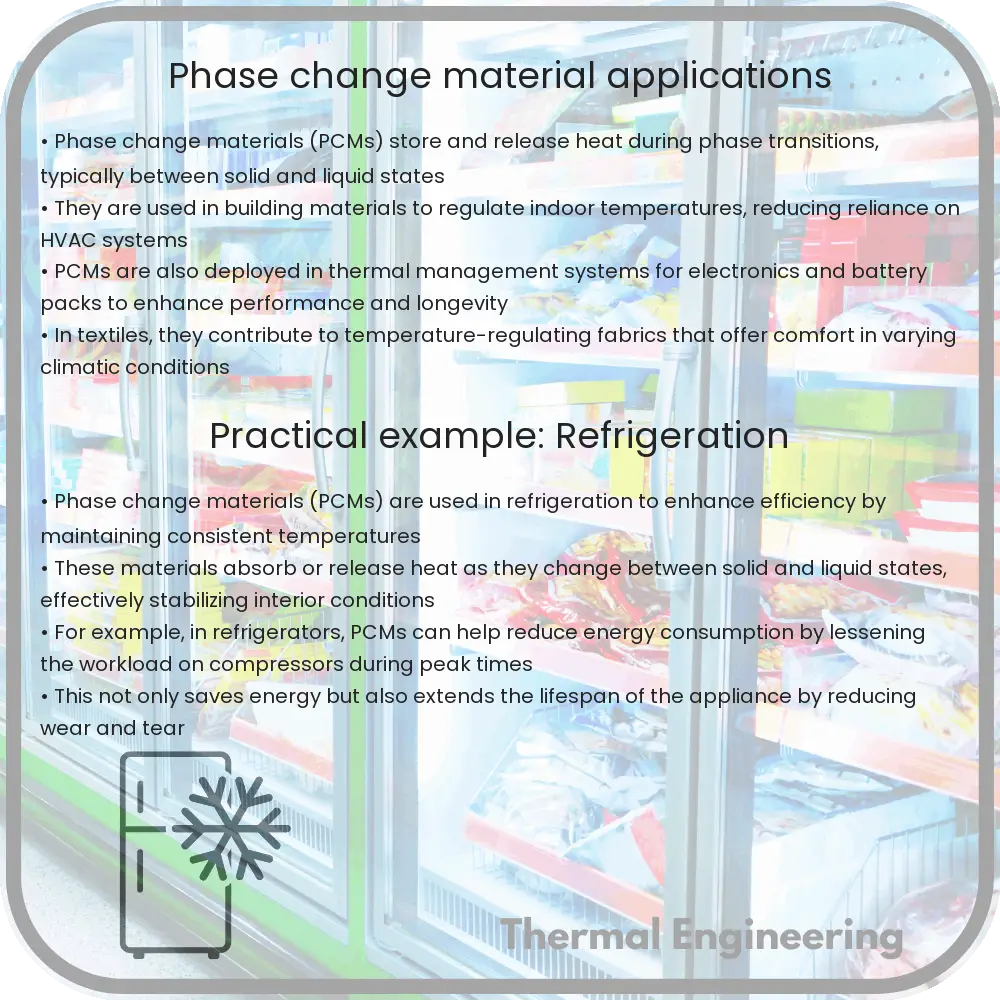Learn about Phase Change Materials (PCMs) and their role in energy efficiency and temperature regulation across various applications.

Understanding Phase Change Materials and Their Applications
Phase change materials (PCMs) are substances that absorb and release thermal energy during the process of melting and solidifying. This unique property allows them to maintain a nearly constant temperature despite changes in the surrounding environment. PCMs are integral to various applications, exploiting their latent heat storage property to enhance energy efficiency and temperature regulation.
Basic Principles of Phase Change Materials
At a fundamental level, phase change materials operate by switching between different states of matter—typically from solid to liquid and vice versa. This transition allows them to store and release energy in the form of heat. The amount of energy involved in these transitions is expressed by the formula Q = m * L, where:
- Q is the heat absorbed or released,
- m is the mass of the PCM,
- L stands for the latent heat of fusion or solidification.
The effectiveness of a PCM is largely determined by its melting point and latent heat capacity, which should align closely with the temperature stabilization goals of the intended application.
Applications of Phase Change Materials
- Building and Construction: In modern green building designs, PCMs are incorporated into materials such as drywall, flooring, and ceiling tiles to reduce the load on heating, ventilation, and air conditioning systems (HVAC). By absorbing excess heat from the surroundings during the day and releasing it at night, PCMs help maintain a comfortable indoor climate, significantly reducing energy costs.
- Thermal Energy Storage: Large-scale energy storage systems often leverage PCMs to store thermal energy generated by solar power or other renewable sources during peak hours, releasing it when the demand rises or the generation drops. This application is crucial in stabilizing grid energy by managing supply and demand effectively.
- Textiles: High-performance fabrics integrate PCMs for managing body temperature in demanding environments. These include sportswear that keeps athletes cool and comfortable, or protective clothing designed for extreme weather conditions, enhancing wearer comfort and safety.
- Electronic Cooling: In densely packed electronic components, PCMs are used to absorb and dissipate heat, thus protecting sensitive parts from overheating. This application is particularly beneficial in enhancing the longevity and reliability of integrated circuits and other electronic devices.
- Temperature Controlled Transportation: PCMs are used in packaging for temperature-sensitive goods such as pharmaceuticals, food, and other perishables. By maintaining a consistent temperature, PCMs help in preserving the integrity and extending the shelf life of these products during transit.
As research and technology continue to evolve, the range of applications for phase change materials is expected to expand. Innovations in material science and thermal management are poised to broaden the use of PCMs in industrial, commercial, and environmental applications. Their role in contributing to energy efficiency and sustainability is becoming increasingly indispensable in our advancing world.
Conclusion
Phase change materials represent a fascinating sector of material science with potent applications in energy efficiency and thermal regulation. By harnessing the latent heat of materials during phase transition, they offer an adaptable solution to the complex challenges of heat management across various sectors. With ongoing developments, the future of PCMs looks promising, set to play a crucial role in achieving more sustainable and efficient energy use in numerous fields.